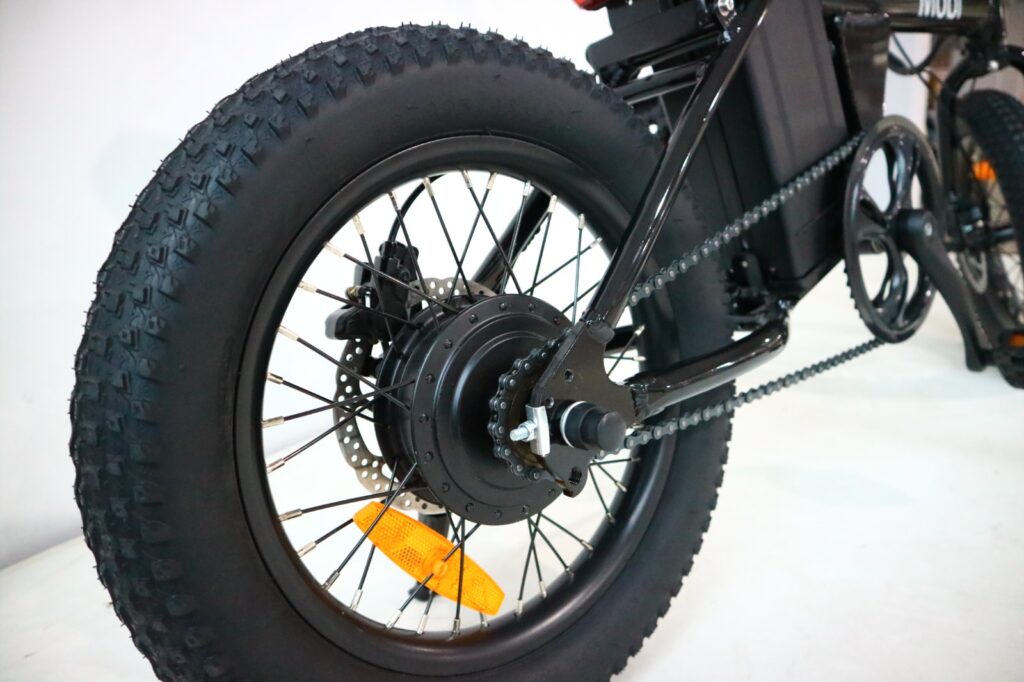Electric bicycles (e-bikes) are revolutionising the way Singaporeans commute—eco-friendly, cost-effective, and convenient. However, one of the most critical components of your e-bike is also one of the most expensive to replace: the battery.
Singapore’s hot, humid climate poses unique challenges to lithium-ion batteries, which power most e-bikes today. If not cared for properly, your battery’s capacity can degrade rapidly, reducing performance and ride range. The good news? With a few mindful habits, you can significantly extend the lifespan of your e-bike battery.
In this article, we’ll explore smart tips to maintain and protect your battery, with advice tailored to Singapore’s weather conditions and urban lifestyle.

Understanding E-Bike Batteries
Most modern e-bikes in Singapore use lithium-ion batteries with a capacity ranging from 7Ah to 20Ah and voltages typically at 36V or 48V. These batteries can last between 500 to 1,000 charge cycles—or roughly 2 to 4 years—depending on how well you care for them.
Battery performance depends on:
- Charging habits
- Temperature exposure
- Load (rider weight + cargo)
- Riding style and terrain
Singapore’s Climate: The Hidden Challenge
Singapore’s year-round temperatures (25–33°C) and high humidity (70–90%) aren’t ideal for battery health. Heat is especially damaging—it accelerates chemical reactions inside the battery, reducing overall capacity and lifespan.
That’s why e-bike users in Singapore need to take extra precautions when charging, storing, and using their bikes.
Tip 1: Never Charge Right After Riding
After a long ride under the sun, your battery is likely warm. Plugging it in immediately to charge raises the temperature even more—this combination of heat and current stresses the battery cells.
Do this instead:
Let the battery cool down for 30–60 minutes before charging.
Tip 2: Avoid Full Discharges
Fully draining your e-bike battery may feel like you’re getting your “money’s worth,” but it’s actually harmful. Lithium-ion batteries prefer partial discharges—keeping the charge between 20% and 80% extends their life.
Do this instead:
Top up regularly. Try not to let the battery drop below 20%, and avoid charging it to 100% unless you’re going on a long ride the next day.
Tip 3: Store in a Cool, Dry Place
When you’re not using your e-bike (especially for a few days or weeks), storing it properly is crucial. Avoid leaving your e-bike in places like balconies, car parks, or corridors exposed to direct sun and moisture.
Best practice:
Remove the battery and store it indoors, away from heat sources. Ideal storage temperature is 15–25°C. Keep it at about 50% charge if unused for more than a week.
Tip 4: Don’t Overcharge
Leaving your battery plugged in overnight can be convenient, but over time, this habit can reduce its lifespan. While most modern chargers stop supplying current when the battery is full, some still trickle charge or generate heat.
Smart move:
Use a timer plug to limit charging to 3–4 hours or invest in a smart charger with auto cut-off.
Tip 5: Avoid Riding in Heavy Rain
While many e-bikes are splash-resistant, very few are fully waterproof. Singapore’s sudden thunderstorms can pose risks to both motor and battery.
If caught in the rain:
- Stop and seek shelter
- Wipe the battery and connectors dry once you’re indoors
- Let everything air-dry before the next ride
Tip 6: Don’t Carry Unnecessary Load
Extra weight increases the demand on the battery. This includes cargo, panniers, or even improperly inflated tyres that increase drag.
Simple solutions:
- Travel light when you can
- Keep tyre pressure within the recommended PSI
- Use pedal assist (Pedelec) instead of full throttle when climbing hills
Tip 7: Monitor Battery Health
Some e-bikes come with a battery management system (BMS) or companion app. Use it to monitor charge cycles, voltage levels, and temperature data.
Extra advice:
- Periodically inspect your battery for swelling, corrosion, or damage
- If something feels off (e.g., reduced range), consult a technician—don’t DIY unless you’re trained
Tip 8: Charge in a Safe Environment
Battery fires, while rare, can occur due to faulty chargers or overheating during charging. In Singapore’s dense housing environment, safety is paramount.
Charging tips:
- Always use the original charger
- Never charge near flammable items
- Place battery on a non-combustible surface (e.g., tiled floor)
When to Replace Your Battery
Despite the best care, no battery lasts forever. Signs that it may be time for a replacement:
- Range drops drastically (e.g., used to cover 50km, now only 20km)
- Battery takes too long or too fast to charge
- Visible bulging or strange smell
Average cost of replacement batteries in Singapore: $250–$600, depending on capacity and brand. Always replace with LTA-approved components.
Bonus Tip: Choose the Right Battery from the Start
If you’re shopping for an e-bike or replacing your current battery, look for:
- Brand reputation (e.g., Samsung, LG cells)
- Warranty (6–12 months at least)
- IP rating (for water resistance)
- Smart BMS features (temperature control, charge cycle tracking)
Conclusion
Your e-bike is only as good as its battery. With Singapore’s tropical climate, thoughtful battery care is essential not just for performance, but for safety and savings. By following the tips above, you can expect longer life, better rides, and fewer costly replacements.
Whether you’re commuting daily or riding on weekends, investing a little time in battery care goes a long way. Keep your battery cool, charged wisely, and sheltered from the elements—and it will serve you well for years.
Looking to upgrade your e-bike or battery? Visit our e-bike collection for LTA-approved models built for Singapore’s roads and weather.
